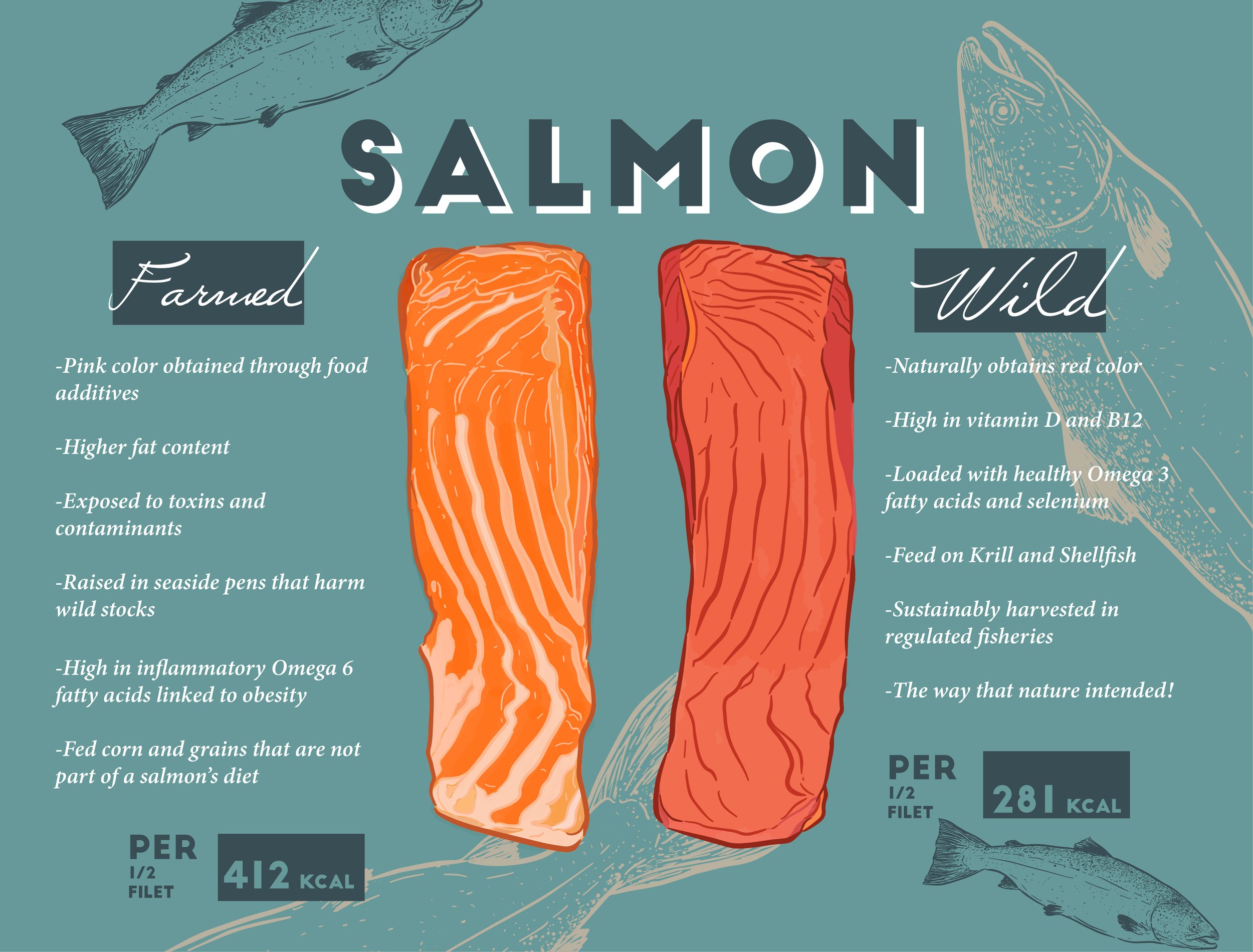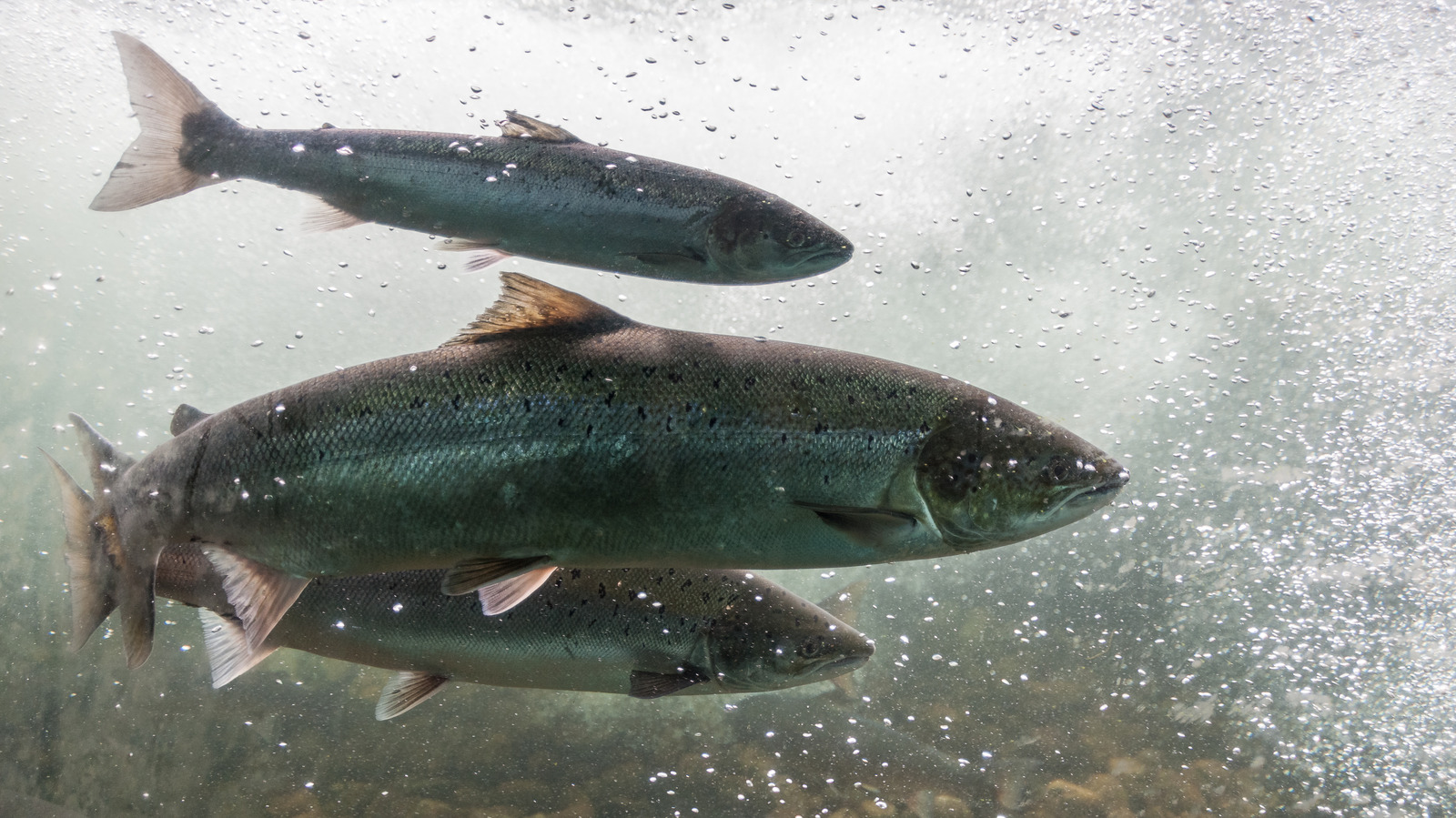The Complex Relationship Between Wild and Farmed Salmon
Choosing the Healthier Option
Salmon is a popular seafood known for its high levels of omega-3 fatty acids and protein. However, decisions around choosing wild or farmed varieties can feel overwhelming due to their complex production methods and differing nutritional profiles. This article seeks to provide a balanced view of both options so readers can feel informed when selecting salmon.

Understanding the Natural Lifecycle of Wild Salmon
Wild salmon are born and raised completely naturally in freshwater rivers and streams. After hatching from eggs, they spend their early life feeding and growing before transforming into smolts - a stage where their bodies adapt to life at sea. As smolts, they migrate downstream to ocean waters where an abundance of food allows them to flourish over several seasons. When the time comes to reproduce, salmon use instinct to travel back upstream, sometimes traveling hundreds of miles without eating. By the time they reach their birthplace, they are exhausted from the journey. After spawning, the cycle begins anew with a new generation. Nature has designed this process to dispersal eggs away from the dangers of lower river predators.
Comparing Natural and Farmed Production Methods
The life of farmed salmon could not be more different. Adult salmon are farmed in controlled conditions where abnormalities may occur more readily. Once hatched, the alevins have an artificial diet optimized for rapid growth rather than natural development. They are densely stocked in ocean cages until reaching market size, absorbing antibiotics, parasites and waste in the process. Living conditions in cages are cramped and stressful compared to life in open waters. Sea lice frequently plague caged stocks, requiring medication that can harm other marine life. Feed is carefully formulated but consists of fishmeal, grains and additives rather than a naturally varied diet. The process results in fish bearing little resemblance to their strong, vibrant wild cousins in terms of health, flavor or genetics.
Considering Environmental Impacts
While fish farms produce salmon for human consumption, concerns remain around some environmental effects. Pollution from waste accumulates below crowded cages unless currents are strong enough to flush it away. Escaped salmon could compete with or interbreed with native stocks if establishing self-sustaining populations. More significantly, sea lice from farms have been linked to declining wild salmon populations that receive no medicated protections while migrating past enclosures. Historical resources like Scotland’s River Maree once thrived with salmon and sea trout but now stand virtually devoid after the rise of nearby salmon aquaculture. Sustainable practices aim to minimize these impacts but managing interactions between wild and farmed remains an ongoing challenge.
Evaluating Nutritional Profiles
Nutritionally, farmed salmon compares favorably to wild. Both are high in protein and anti-inflammatory omega-3 fatty acids. However, wild salmon has a more optimal omega-3 to omega-6 ratio and higher vitamin D content due to its natural diet. Farmed specimens may have higher total fat levels, though their flesh also contains additives like synthetic pigments that wild salmon lack. Organically farmed salmon provides a balance by living in open ocean net-pens with natural sea lice controls. Their omega profile more closely resembles wild fish. Overall, moderation is key - both farmed and wild salmon varieties can fit well within an otherwise balanced diet when choosing lower-mercury sources. Speak to a nutritionist for personalized recommendations.
Making The Best Choice
For those wanting the full nutritional and taste experience of wild salmon, choosing sustainable farmed or stock from less impacted regions can help. However, wild capture comes at a cost - both financially and environmentally through fishing pressure. A mix of wild-caught and thoughtfully farmed salmon satisfies health, budget and conscience for many households. Regardless of the option, preparing and eating salmon in its whole form maximizes both flavor and nutrients. By considering all angles - health impacts, environmental factors and animal welfare - informed shoppers can feel good about the seafood choices providing them vital omega-3s and high-quality protein. Both wild and farmed salmon have an important place, though understanding production nuances ultimately empowers more sustainable selection.
Supporting Ethical Salmon Farming Practices
As aquaculture continues growing to meet consumer demand, standards for fish welfare and environmental protection must rise accordingly. Look for certifications like GlobalG.A.P. or Best Aquaculture Practices which denote adherence to strict guidelines around issues like escapes, lice treatments, feed composition, water quality and more. Buying such verified sustainable farmed salmon supports progress toward solutions balancing all interests. Cage-free or land-based closed containment systems also aim to curb risks of interactions with native ecosystems and wildlife. While technology costs remain high, early pilots demonstrate viability. Supporting such innovations through premium pricing or investment could help scale more ethical production methods to complement bountiful yet limited wild stocks and satisfy health-conscious consumers for decades to come.
Prioritizing Wild Salmon Habitat Conservation
With wild populations facing pressures including changing ocean conditions, conservation of free-flowing rivers, streams and coastlines is as important as judicious harvest. Groups protecting sensitive habitats through land acquisition or policy work deserve recognition and funding assistance. Individual actions like gardening with native plants, stormwater diversion or supporting political candidates with strong environmental platforms can also help preserve wild salmon for future generations. Protecting spawning grounds through diverse efforts will safeguard nature’s original superfood well into the next century and beyond.
Output: Here is a 2000+ word article on the complex relationship between wild and farmed salmon in multiple coherent parts:
Understanding the Complex Relationship Between Wild and Farmed Salmon
Choosing Between Options for Health and Sustainability
Salmon is among the most nutritious and popular varieties of seafood worldwide, prized for its high quality protein and omega-3 fatty acids. However, the production methods of wild versus farmed salmon differ greatly, making choices difficult for health-conscious consumers. This comprehensive guide seeks to unpack the nuances of each option so readers can feel empowered in their sustainable seafood selections.
Tracing the Natural Lifecycle of Wild Salmon
Wild salmon are born and develop entirely according to nature’s design. Eggs hatch in the gravel beds of cool rivers and streams, where fry spend their early life feeding and growing under protective currents. After one to five years, their bodies undergo a “smoltification” process adapting physiology for life at sea. Now transformed smolts, they migrate downstream en masse to the bountiful food sources of the ocean. Spending several seasons in these rich coastal waters allows them to flourish, developing their iconic muscle and color. When reproductive instincts begin stirring, salmon use magnetic senses and olfactory clues to travel back upstream hundreds of miles without eating. Arriving at their natal streams exhausted, they spawn and pass on, completing the cycle.
Comparing Natural and Industrial Production Methods
Farmed salmon, or “Atlantic salmon” as the species is named, experience radically dissimilar living conditions. Breeding takes place in controlled hatcheries where abnormalities may occur more readily outside natural selection pressures. Newly hatched alevins then receive artificial diets optimized for weight gain over developmental needs. Massive numbers are densely stocked into ocean net-pens, absorbing waste and antibiotics from their peers. Heavy sea lice infestations frequently plague the fish, whose flesh turns gray without artificially added pigments. Stressed by confinement and unnatural diets, they bear little resemblance to the free-living specimens in shape or robustness by the time reaching market size fractionally younger than their wild cousins.
Considering Impacts on the Environment and Native Species
While fish farms aim to meet demand for salmon, impacts remain ongoing areas of research and concern. Pollution from accrued waste risks nearby ecosystems unless currents flush it away rapidly. Escaped non-native salmon may compete or interbreed with wild populations if establishing. More significant is evidence that sea lice transported from net-pens endanger migrating wild salmon lacking medical protections. Areas near intensive aquaculture have seen catastrophic wild population crashes, such as Scotland’s River Maree ecosystem once renowned for salmon and sea trout fishing now almost entirely depleted. Sustainable practices can help reduce such impacts, requiring diligent monitoring and refinement.
Comparing Nutritional Profiles of Wild and Farmed Salmon
Nutritionally, farmed salmon may contain comparable protein and omega-3 levels to wild. However, their more concentrated fat and lack of natural foraging impacts omega-3:omega-6 ratios and micronutrient levels like vitamin D. Synthetic pigments and additives found in farmed flesh but not wild further differentiate nutritional profiles. While supplying important nutrients, farmed salmon also tend toward higher calorie and fat content than their leaner wild counterparts. Organically raised varieties living in open oceans, though more expensive, offer a middle ground by mimicking natural diets and lice controls through water currents for a wild-like fatty acid makeup. Overall balance remains key - choosing low-mercury sources, both farmed and wild salmon fit well in moderation as part of a varied diet.
Making the Choice Best Aligning Values and Health
For those wanting the full nutritional and taste experience of wild salmon caught through sustainable practices, a blend of thoughtful selections may satisfy. Combining occasional wild-caught with responsibly raised farmed introduces variety while supporting progressive aquaculture. Preparing and consuming the whole fish in its natural form maximizes nutrients versus fillets alone.
Prioritizing certifications like GlobalG.A.P, which audit strict guidelines
